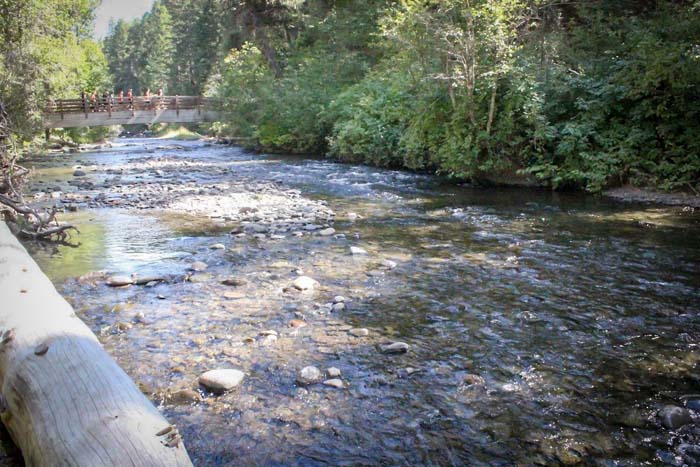Wolf activity increases in Wallowa County
Published 10:00 pm Wednesday, May 7, 2025
Commissioners, wildlife experts, ranchers and more attack wolf issue
ENTERPRISE — Calving season on local ranches, and a scarcity of newborn elk, have prompted an onset of wolf depredations on livestock in Wallowa County, county commissioners learned Wednesday, May 7.
Commisioners had planned to hear updates from the Oregon Department of Fish and Wildlife and the U.S. Fish and Wildlife Service, but given the urgency of the wolf attacks on cattle, commissioners decided to put those off until May 21.
Commissioner Lisa Collier said she and fellow Commissioner John Hillock have been staying in their offices late over the past week to do what they can to solve the wolf problem that started a few weeks ago.
Trending
Collier said state Sen. Todd Nash, ranchers, the Wallowa County Sheriff’s Office and USDA Fish and Wildlife Service have contacted commissioners about the recent increase in wolf attacks investigated by ODFW.
“There were many days we stayed to between 10 p.m. and midnight, so we’ve been in very close contact,” she said. “I just wanted the public to hear how we’ve gotten all of these agencies together to figure out what’s being done.”
ODFW
Jeff Yanke of ODFW attended the meeting via Zoom from his office in La Grande. Yanke gave a bit of a summary of wolf activity in the county during the past couple of weeks. He said the first report came in April 22 of a calf killed on Crow Creek in the Zumwalt area.
“Since then, we have had five wolf depredation events (kills) and two probables and several other interactions with livestock,” he said.
On May 2, the day after the second qualifying event — ODFW requires two reported wolf kills of livestock before issuing a permit to kill a wolf — ODFW issued such a permit. He said the department worked in partnership with Wildlife Services, which is the agency that employs trappers.
Yanke said the various agencies involved track wolves on the ground and observe from the air to find the predators.
Trending
He said as of May 7 there were another six wolves reported and one depredation.
Yanke expressed his appreciation to all who have helped report depredations and clean up cattle carcasses. Leaving carcasses is one of the prime attractants for wolves.
Hillock asked if anyone knew how much a wolf eats. John Williams, who is the Eastern Oregon co-chairman for the Oregon Cattlemen’s Association, said he’s been told an average wolf will consume about 22 elk calves a year. Williams has been active working with the Legislature to help Nash shepherd the wolf compensation bill through.
“I know there are still wolves in the area and there are still conflicts going on,” Yanke said, adding that ODFW has removed four wolves between April 25 and May 2, “so we’re back down to having one wolf on the authorization.”
Fish and Wildlife Services
Shane Koyle of the U.S. Fish and Wildlife Services, the district supervisor based in La Grande, also addressed the county board.
“Between us and ODFW, we’ve got all the tools we need,” he said, adding the agency often has someone patrolling at night and looking for wolves. He said the agency also communicates often with ranchers to see where they need help.
Collier added that counties can declare a state of emergency for any kind of emergency. In the past, Wallowa County has declared emergencies for drought and for fire. To do so for wolves would bring federal funding for trackers and trappers.
“We decided to not go that route because we’re trying to do that to get extra funding for the trappers on the ground,” she said.
Collier said there are efforts ongoing from the air to find wolf packs.
Deanna DeMillo, president of the Wallowa County Stockgrowers, and Cynthia Warnock, Stockgrowers treasurer, expressed their appreciation.
“We’re pretty pleased by how they’ve handled the situation and by issuing permits,” DeMillo said.
Warnock, who oversees payouts from the state’s wolf compensation fund, said “I think that makes the producers feel a little better.”
Wallowa County Sheriff Ryan Moody encouraged all producers who suffered a wolf attack to report it to the sheriff’s office. He said although the depredations do usually get reported to ODFW, the sheriff’s office also can be of help. He said his office would like to be able to track how many calls come in regarding wolves.
Getting proactive
Hillock said he has discussed with ranchers proactive steps such as issuing wolf hunting tags for the Zumwalt area to keep the packs there in check. Oregon doesn’t allow wolf hunting, however.
“That would get people out on the ground and pushing them around a bit so they’re not so concentrated in one area. What do you think the chances of that are?” Hillock asked Yanke.
Yanke said that would require an amendment to the state’s five-year wolf management plan, which was just renewed in 2023.
“It’s something we can certainly discuss,” he said, but the Fish and Wildlife Commission would have to give its approval.
“It’s way more than a hail Mary,” Williams said. “They’re not likely to make changes. … It’s a political process and it’s very arduous. … It’s not something that’s been on the table. It’s an entirely different thought process.”
“At some point we’re going to have to change our management strategies,” Hillock said. “It’s not just going to affect our cattle herds, but they’re going to take out our elk herds.”
He said he’s been hearing from ranchers.
“Ranchers are telling me they don’t want to eliminate the wolves, but we’ve really got to think about how we manage them,” Hillock said.
A bill Nash recently got through the Oregon Senate would compensate producers at a 5-to-1 ratio for the market value of most livestock. The bill now awaits a reading in a committee in the Oregon House, where Rep. Bobby Levy, R-Echo, is pushing it.









